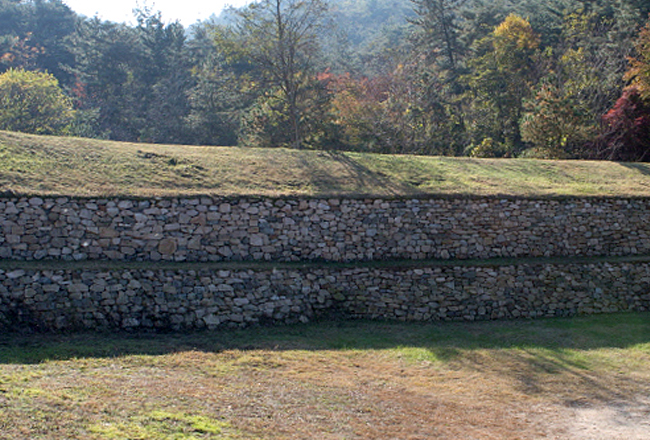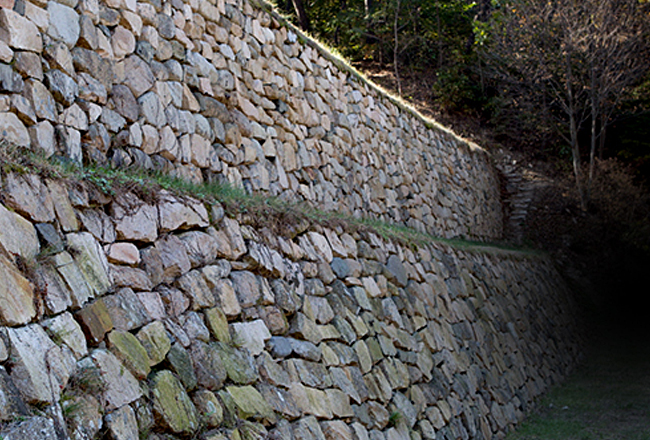Discover Korea's World Heritage
Gyeongju Historic Areas
Gyeongju, a City with 1,000-Year History
Gyeongju Historic Areas consist of five zones: the Mount Namsan Belt known for various Buddhist relics; the Wolseong Belt, the old royal palace ground; the Tumuli Park Belt featuring groups of royal tombs; the Hwangnyongsa Belt, a historic site for Buddhism; and the Sanseong Fortress Belt, where a defensive fortress is located.
The Mount Namsan Belt, Treasure Trove of Buddhist Art
Visitors to Mount Namsan in Gyeongju can feel the breath of the people of Silla, who wished for the land of Buddha.
As indicated in an old saying, “There are as many temples as stars in the sky,” the mountain brims with temples and cultural relics, including the Najeong well that appears in Silla’s founding myth, the Poseokjeong Pavilion site that led to the end of Silla, the Mireukgok Seated Buddha Statue, the Baeri Standing Buddha Statue and the Maae Stone Buddha Image engraved on Chilburam Rock, just to name a few. Within the belt, there are 100 Buddha statues, 100 stone pagodas and 150 temple sites. As a witness to Silla’s rise and fall, the mountain is the treasure trove of Silla’s Buddhist art.
Source: Cultural Heritage Administration
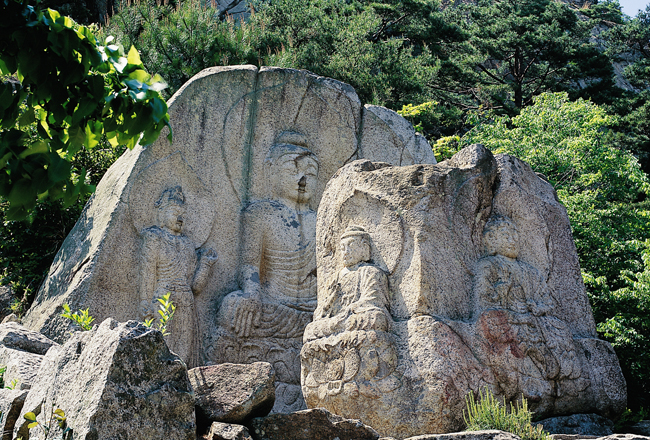
Mireukgok Seated Buddha Statue
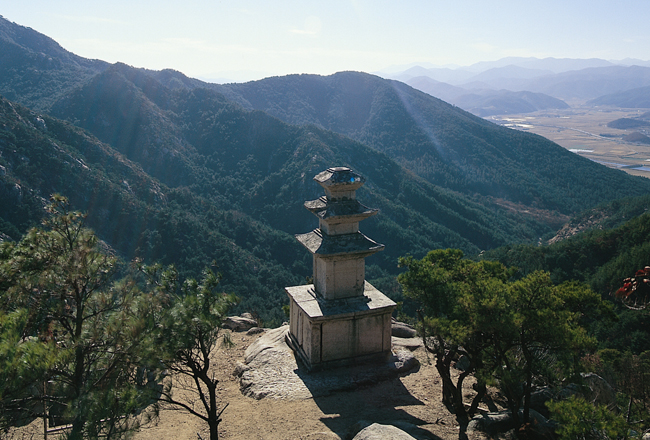
Three-story Stone Pagoda of Yongjangsa Temple Site
The Wolseong Belt, a Royal Palace Site of the 1,000-year Kingdom
The Wolseong Fortress (Moon Fortress), in the shape of a half moon, is also called Banwolseong Fortress (Half Moon Fortress). The spacious fortress commanding a fine view of nature was a royal palace site of the Silla Kingdom, which lasted for nearly 1,000 years. Renowned spots in the area include Gyerim Wood, where Kim Al-ji, the founder of the royal Kim clan of Silla, was born, Donggung Palace and Wolji Pond (Imhaejeonji Site, Anapji Pond) from the Unified Silla period, as well as Cheomseongdae Observatory, the oldest surviving astronomical observatory in East Asia.
Source: Cultural Heritage Administration
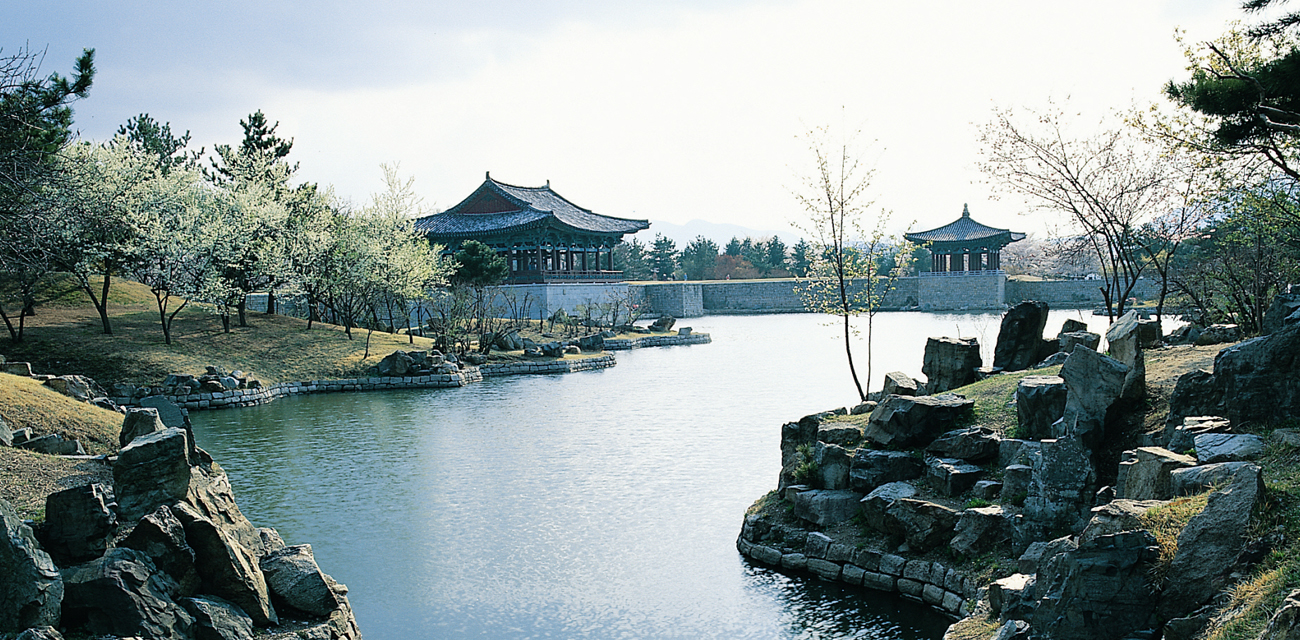
The Tumuli Belt, a Cluster of Old Burial Mounds
The area consists of three groups of royal tombs dating back to the Silla era. Known as the Daereungwon Area in Korean, the name “Daereungwon” came from a history book, History of Three Kingdoms, which states: “King Michu was buried in Daereung.”
Tombs of high-ranking figures including kings, queens and aristocrats are located in the belt. By section, the clusters of tombs are separately called Hwangnamri, Nodongri and Noseori.
Valuable relics were excavated from the tombs, showing the lifestyles of the time. The relics discovered there include golden crowns, the essence of dazzling Silla culture, the Cheonmado painting (Painting of a Heavenly Horse), glass cups and various types of earthenware.
Source: Cultural Heritage Administration
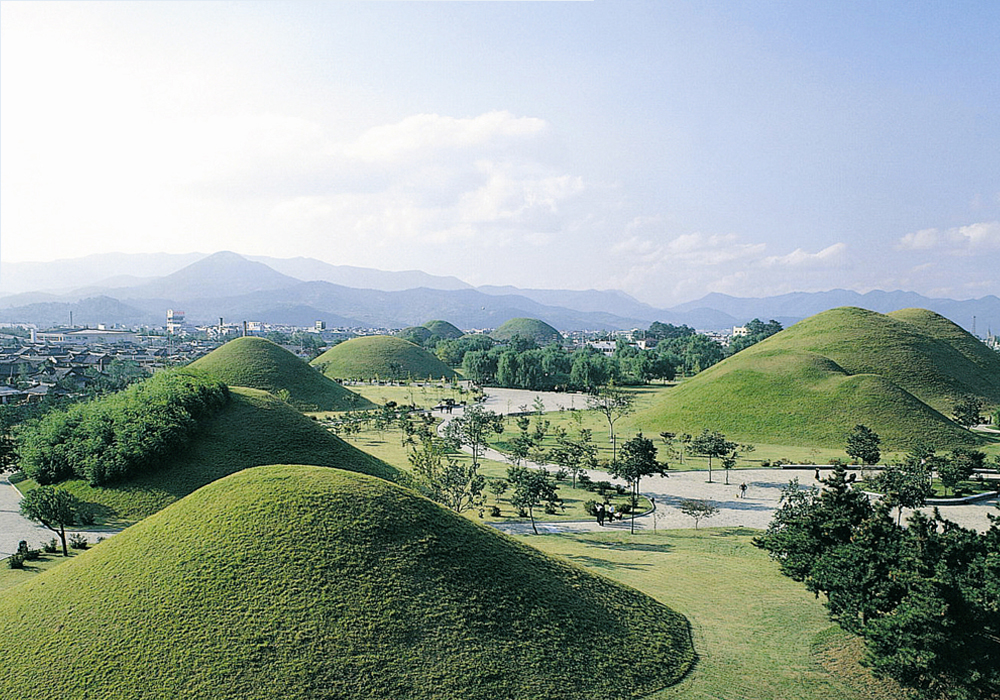
Hwangnyongsa Belt, the Essence of Silla Buddhism
Hwangnyongsa Temple, the largest Buddhist temple of Silla was in this area. While King Jinheung was building a palace east of Wolseong Fortress in 553, he saw a yellow dragon ascending to heaven. The king, a devout Buddhist, rebuilt the building as a temple and named it Hwangnyongsa (Yellow Dragon Temple).
The area consists of the Hwangnyongsa Temple site and Bunhwangsa Temple. As the guardian temple of Silla, the magnificent Hwangnyongsa Temple remained the largest Buddhist temple in East Asia for about 700 years before it was burned down during the Mongol invasion in 1238 (25th year of King Gojong of Goryeo).
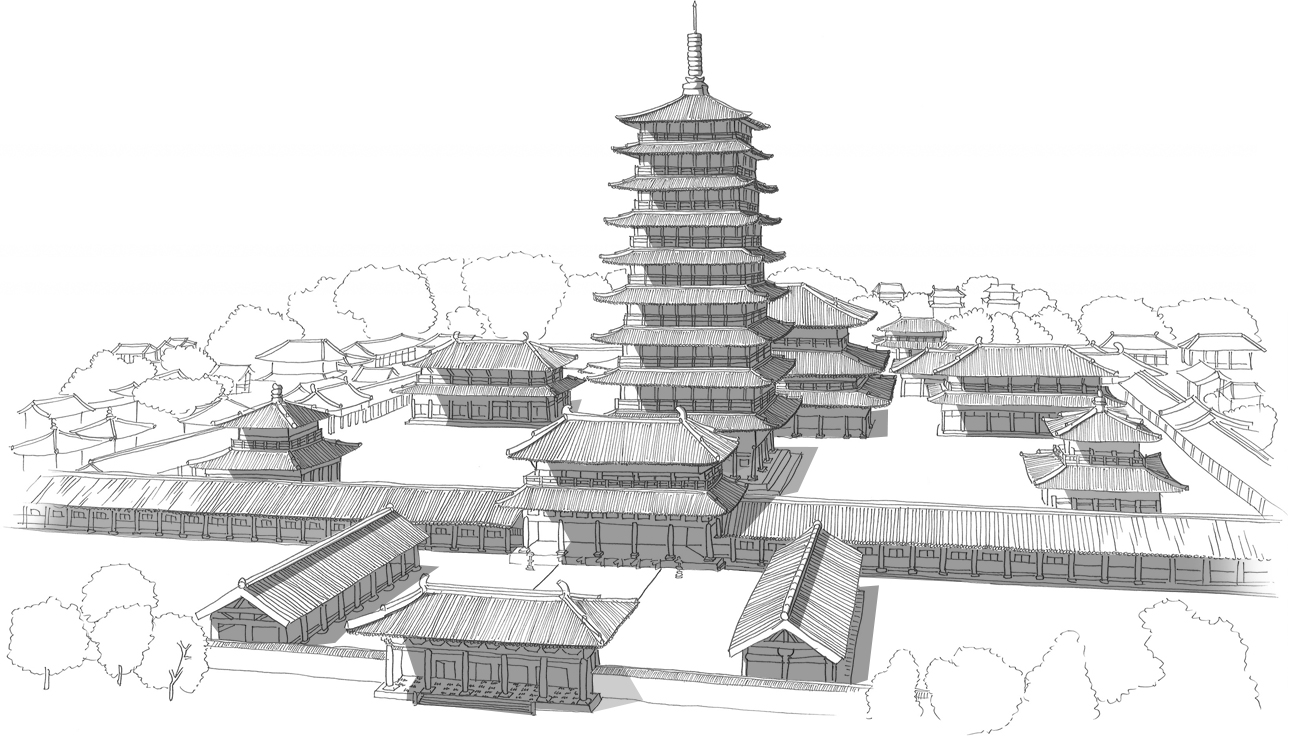
Virtual Restoration of Hwangnyongsa Temple
Sanseong Fortress Belt, the Core of the Capital’s Defense Structure
The Sanseong Fortress (mountain fortress) belt comprised the core of the capital’s defense facilities. The area consists of Myeonghwal Mountain Fortress, which is estimated to have been built before 400 A.D. Surrounding Mount Myeonghwalsan, south of Bomunho Lake in Gyeongju, the mountain fortress contributed to fending off Japanese invaders and was also used as a temporary palace. It consists of two castles, Toseong (earthen castle, 5 kilometers) and Seokseong (stone castle, 4.5 kilometers).
Source: Cultural Heritage Administration
Myeonghwal Mountain Fortress
Cheomseongdae Observatory
Cheomseongdae Observatory was built in the mid-7th century during the reign of Queen Seondeok to observe the movements of the universe. It has since retained its original form for over 1,300 years. The oldest surviving observatory in East Asia reflects the scientific spirit of the people of Silla.
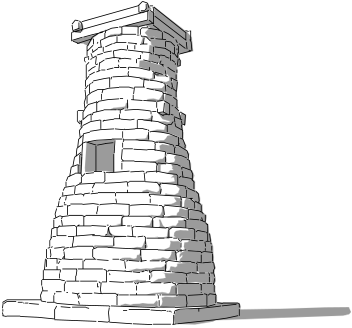
Cheonmachong Tumulus
Built during the late 5th and the early 6th century, Cheonmachong (Heavenly Horse Tomb) is the only burial mound whose interior has been open to the public among the tombs in the Tumuli Belt. Officially titled Tomb No.155, it became known as Cheonmachong after a birch bark saddle flap adorned with a painting of a flying horse was found inside the tomb.
A golden crown excavated from the tomb is larger and more splendid than any other golden headpiece from the Silla period discovered thus far, and represents the flamboyant culture of the golden kingdom of Silla.
Source: Cultural Heritage Administration
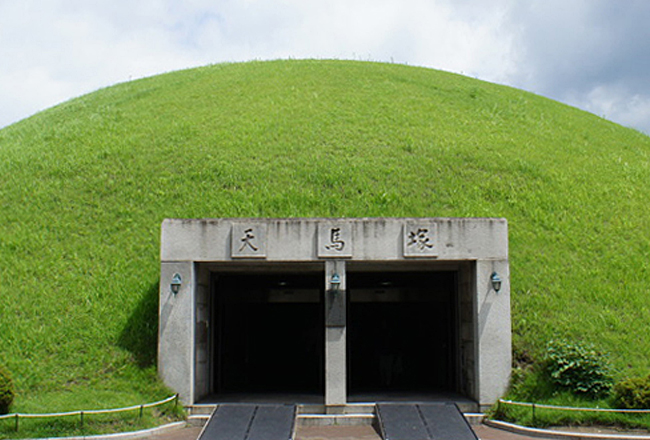
Cheonmachong Tumulus
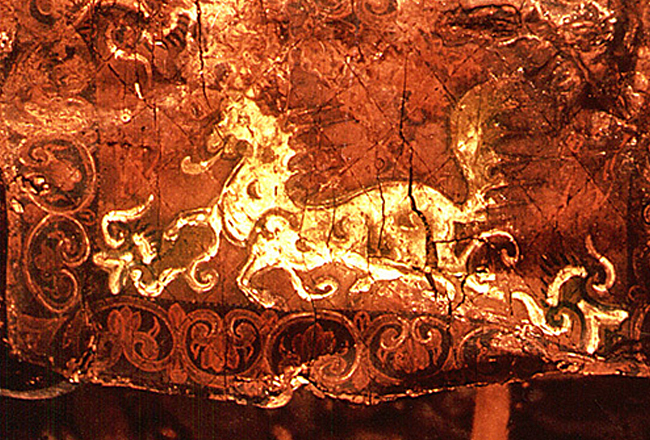
Cheonmado painting (Painting of a Heavenly Horse)


